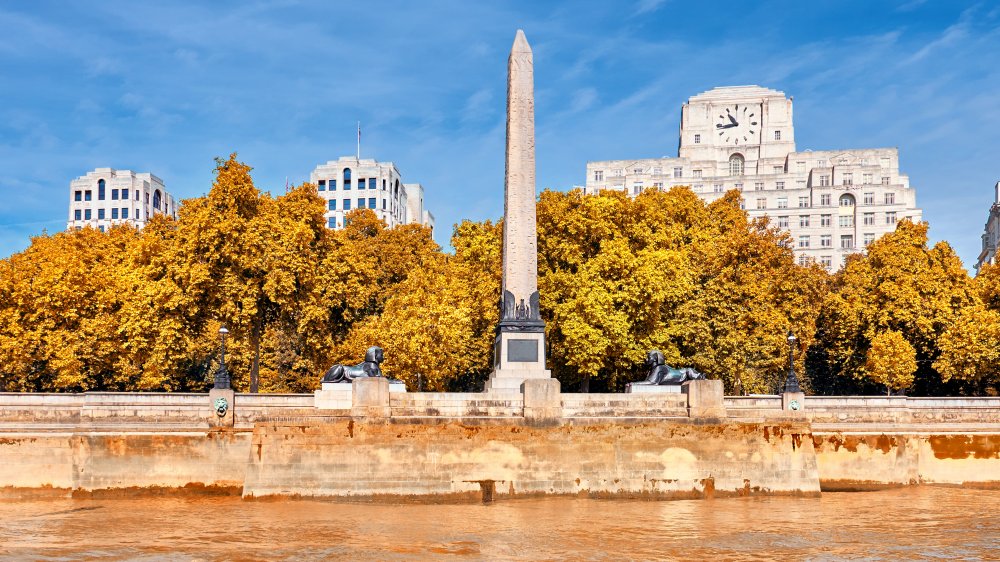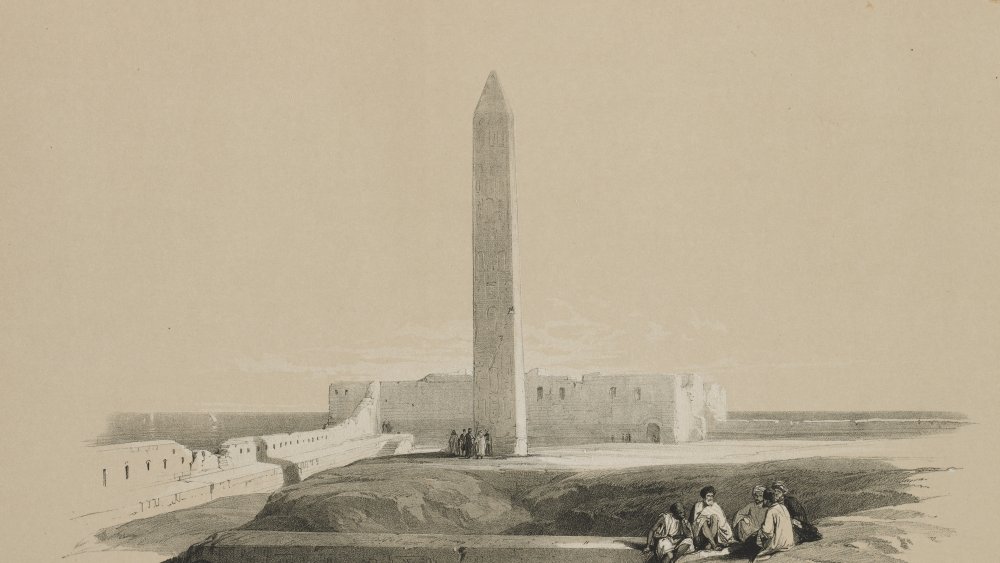The Story Behind Cleopatra's Needle
Cleopatra's Needle is not Cleopatra's actual sewing needle. It is an obelisk — a series of three obelisks, in fact — that stands in New York's Central Park, in London, and in Paris. Each of these came from Egypt, but none were actually built for the famous Egyptian pharaoh.
Ancient Origins writes that the three obelisks do not have much in common but each has its history. The London and New York obelisks were both constructed in Heliopolis from red granite while the Paris one was made of yellow granite and placed in front of the Luxor temple. All three bear hieroglyphics praising King Ramses II's reign even though two of the obelisks, the London and New York ones, were supposed to celebrate Thutmose III.
According to the Central Park Conservancy, New York's Cleopatra's Needle was a gift from the Egyptian government. Built around 3,500 years ago, it stood outside the Temple of the Sun with its sister, the London obelisk. Both guarded the temple until the Persians toppled them over. Then Julius Caesar found them and had them moved to Alexandria to a temple conceived by Cleopatra. Ancient Origins pointed out that while the US gladly took custody of the Egyptian gift, the United Kingdom hesitated in accepting their obelisk from Egypt in 1819. They said moving the granite monument was too expensive, and it wasn't until 1877 when Sir William James Erasmus Wilson sponsored its transport for 10,000 pounds.
No, Cleopatra's Needles are not spaceships
The Paris obelisk differed from the New York and London ones not only for its material but from where it's from. Since it stood outside the Luxor temple, it's sometimes called the Luxor obelisk. It was gifted to France in 1833, explained Ancient Origins, but unlike the British, the French enthusiastically accepted. The French had a steamship sail to Alexandria to bring it back. To get to the obelisk, special canals had to be built. The Paris obelisk was put in place at the Place de la Concorde, where kings and queens had been beheaded, by King Louis-Philippe I, who hoped to erase signs of the French Revolution. Its original pedestal was deemed too scandalous for display, however, and now resides in the Louvre Museum, the museum explains.
New York's obelisk also took feats of engineering to bring to Manhattan. According to the Central Park Conservancy, special railways were designed to transport the monument from the Hudson River to its designated area near the Metropolitan Museum of Art. It moved one street block at a time, taking 19 days to get from 86th street on the west side to the east side and another 20 days to move from Fifth Avenue because there was a blizzard.
All three obelisks stand proudly in their adopted cities, though Egyptian authorities warned New York to take better care of its obelisk or risk it being taken back. Cleopatra's Needles may have nothing to do with Cleopatra, but it does lend an ancient flair to the very different cities they stand on.

